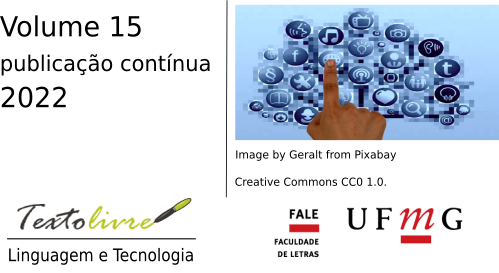Neurometodologia e neuroimagem para a formação de professores
DOI:
https://doi.org/10.35699/1983-3652.2022.40454Palavras-chave:
Metodologia de ensino, Neuromethodologia de ensino, Neuroimagem, Treinamento de professores, CérebroResumo
A neuromethodologia é um conceito sobre o qual dificilmente encontramos informações em bancos de dados científicos e literatura especializada. Portanto, o objetivo geral do trabalho apresentado é analisar a relação entre metodologia de ensino, ensino de neuromethodologia, inclusão educacional, tecnologia e formação de professores. O projeto da pesquisa é não-experimental, descritivo, explicativo, correlacional e regressivo. A amostra utilizada foi uma amostra de conveniência de professores universitários de universidades espanholas, brasileiras, colombianas e paraguaias, com um total de 815 participantes. O instrumento de pesquisa foi um questionário ad hoc à escala Likert com excelente confiabilidade (Cronbach's Alpha, .969), que foi validado em termos de conteúdo e construído através de uma análise exploratória de fatores. A análise de correlação e a modelagem linear automática fornecem uma primeira conclusão mostrando que a neuromethodologia dá cientificidade às tecnologias utilizadas pelo professor, sendo fundamental para a inclusão educacional. Os exemplos de neuroimagem dão uma ideia da pesquisa que estamos desenvolvendo em neuromethodologia.
Downloads
Referências
ARNAIZ, P. El reto de educa en una sociedad multicultural y desigual. In: PALOMINO, A.; ET AL. (Eds.). Los desafíos de la Educación Especial en el umbral del XXI. Murcia: Servicio de Publicación de la Universidad de Murcia, 1996.
BOOTH, T.; AINSCOW, M. Index for Inclusion: Developing Learning and Participation in Schools. Bristol: Centre for Studies on Inclusive Education, 2000.
CARDINALI, D. P. Neurociencia aplicada: sus fundamentos. Buenos Aires: Editorial Médica Panamericana, 2007.
DE LA ORDEN HOZ, A. Tecnología educativa e investigación. Bordón: Revista de pedagogía, n. 263, p. 381–390, 1986. Available from: https://dialnet.unirioja.es/servlet/articulo?codigo=54154. Visited on: 14 Sept. 2022.
HERNÁNDEZ, A.; DE BARROS, C. Neuroimagen en Neuropedagogía. en prensa. [S.l.: s.n.], 2022.
HONORÉ, B.; PALACIOS, M. T. Para una teoría de la formación: dinámica de la formatividad. Madrid: Narcea, 1980.
JIMÉNEZ, C. C. E. Metodología de la Investigación Tecnológica. [S.l.: s.n.], 2008. Available from: https://www.gestiopolis.com/concepto-tecnologia/. Visited on: 14 Sept. 2022.
KAISER, H. F. An index of factorial simplicity. Psychometrika, v. 39, n. 1, p. 31–36, Mar. 1974. DOI: 10.1007/BF02291575. Available from: https://doi.org/10.1007/BF02291575. Visited on: 14 Sept. 2022.
NEUNER, G. Pedagogía. La Habana: Libros para la Educación, 1981.
NUÑEZ, R. El siglo de la ciencia. Muy Interesante, n. 42, p. 14–17, 1999.
OOSTENVELD, R.; PRAAMSTRA, P. The five percent electrode system for high-resolution EEG and ERP measurements. Clinical Neurophysiology, v. 112, n. 4, p. 713–719, Apr. 2001. DOI: 10.1016/S1388-2457(00)00527-7. Available from: https://www.sciencedirect.com/science/article/pii/S1388245700005277. Visited on: 14 Sept. 2022.
STENHOUSE, L. La investigación como base de la enseñanza. Madrid: Ediciones Morata, 1987.
VARIOS. Enciclopedia universal ilustrada. Barcelona: España Calpe, 1917.
ZABALZA BERAZA, M. A. Metodología docente. REDU. Revista de Docencia Universitaria, v. 9, n. 3, p. 75, Dec. 2011. DOI: 10.4995/redu.2011.6150. Available from: https://polipapers.upv.es/index.php/REDU/article/view/6150. Visited on: 14 Sept. 2022.
Downloads
Publicado
Edição
Seção
Licença
Copyright (c) 2022 Claudia de Barros Camargo

Este trabalho está licenciado sob uma licença Creative Commons Attribution 4.0 International License.
Este é um artigo em acesso aberto que permite o uso irrestrito, a distribuição e reprodução em qualquer meio desde que o artigo original seja devidamente citado.











